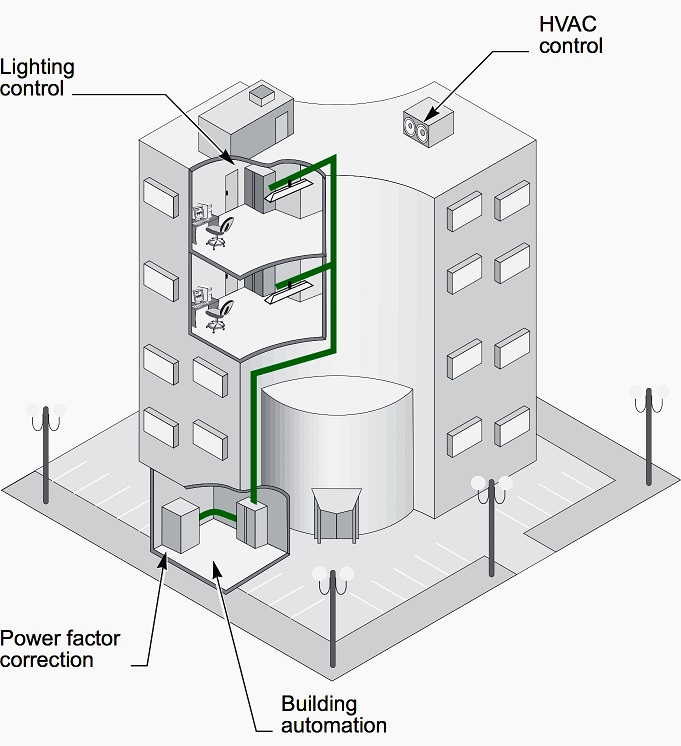How do energy efficient buildings work? Do they really produce the financial and environmental gains that they promise?
Constructing an energy-efficient building has many benefits. Not only does it save money on power consumption but it also reduces greenhouse gas emissions which contribute significantly to climate change.
Energy-efficient buildings can be very successful when properly planned and implemented. But how do energy efficient buildings work exactly? And what challenges come with maintaining them?
In this blog post, we’ll explore the answers to all these questions so you can determine if investing in an energy-efficient building is right for your business.
Table of Contents
What is an Energy Efficient Building?
An energy-efficient building is a structure that has been designed and constructed to consume less energy than traditional buildings. This can be achieved through the use of advanced materials, insulation, air-sealing techniques, and other technologies.
The goal of an energy-efficient building is to reduce the amount of electricity or fuel needed for heating, cooling, lighting, and other operations while still providing comfortable conditions for its occupants.
What is Energy Efficiency?
Energy efficiency refers to the ability of a system or device to perform its intended function using less energy than conventional methods. It also includes reducing waste in production processes and cutting back on greenhouse gas emissions from burning fossil fuels.
Energy efficiency can be improved by replacing power-hungry appliances with more efficient models, improving insulation, utilizing natural light sources, adding smart thermostats, and taking advantage of renewable resources like solar power, wind power or geothermal heat pumps.
Why Should Businesses Invest in Improving Energy Efficiency?
The benefits of an energy-efficient building are numerous – not only does it save money on utility bills but it also reduces greenhouse gas emissions which contribute significantly to climate change.
Energy-efficient businesses may also qualify for tax credits or rebates from local governments which further lowers costs associated with the construction and maintenance of energy-efficient buildings.
Finally, an energy-efficient building is also good for its occupants as temperature control increases comfort levels while proper insulation reduces noise pollution from outside sources such as traffic or aircraft.
How Do Energy Efficient Buildings Work?
Energy-efficient buildings are designed to reduce energy consumption and increase efficiency by making changes to certain areas within the structure.
Insulation and Sealing
Insulation is a key component of an energy-efficient building. It helps keep the interior temperature consistent throughout the year by trapping heat during winter months and keeping it out during summer months.
Proper air sealing techniques can also help prevent air leaks which will further improve efficiency. Common materials used for insulation include fiberglass batting or foam board as well as spray foam insulation for hard-to-reach areas such as attics or crawl spaces.
Heating and Cooling Systems
Heating and cooling systems play a major role in how much energy a building consumes each month. Installing high-efficiency HVAC units can significantly reduce your monthly utility bills while providing comfortable temperatures all year round.
Other options such as geothermal heating/cooling systems may be more expensive upfront but can provide long-term savings due to their low operating costs.
Additionally, zoning your building with multiple thermostats can help you control temperatures on different floors or sections without wasting energy on unused rooms that don’t need climate control.
Lighting and Appliances
Lighting accounts for up to 20% of total electricity usage in many buildings, so switching from incandescent bulbs to LED bulbs is one way to make a big difference quickly when it comes to reducing overall energy consumption in an existing structure.
Replacing older appliances with Energy Star-certified models also makes sense since they have been tested for their efficiency levels compared to older models.
Furthermore, investing in smart technology like programmable thermostats, motion sensors, and occupancy sensors will allow you even greater control over your building’s power usage.

(Source)
The Cost of Building an Energy-Efficient Facility
Energy-efficient buildings can be a significant investment, but their long-term savings are worth it. Upfront costs include purchasing and installing energy-efficient appliances, lighting fixtures, windows, insulation materials, and other necessary components. The cost of these items will vary depending on the type of materials used and the size of the project.
Long-term savings from having an energy-efficient building come in many forms such as lower utility bills and reduced maintenance costs. Some states also offer tax incentives for making improvements that increase efficiency in existing buildings or constructing new ones that meet certain standards. It is important to research what types of rebates may be available before beginning any construction projects.
Challenges of Maintaining an Energy-Efficient Building
Maintaining an energy-efficient building is not easy. Here are some of the challenges that building managers face when maintaining an energy-efficient facility.
Monitoring Usage and Performance Levels
Keeping track of energy usage and performance levels is essential for maintaining an energy-efficient building. This requires regular monitoring of utility bills, equipment performance, temperature readings, and other factors that affect the overall efficiency of the building.
It also involves staying up-to-date on new technologies or methods that may improve efficiency even further. For example, installing sensors to monitor temperature fluctuations throughout the day can help identify areas where you need to replace insulation or windows.
Keeping Up with Technology
As technology advances rapidly in this area, it’s important to stay informed about new products that could make your building more efficient. Newer technologies such as smart thermostats or motion detectors can significantly reduce energy consumption while providing better comfort for occupants.
Finding Qualified Experts
Another challenge in maintaining an energy-efficient building is finding qualified professionals to install, upgrade and maintain your systems. These professionals should have specialized knowledge of how do energy efficient buildings work as well as experience troubleshooting any issues you may encounter.
How to Turn Existing Structures Into Energy-Efficient Buildings
Now that you know how do energy efficient buildings work and how they can benefit your business, here’s how you can start the ball rolling.
1. Assess Current Efficiency Levels
To maximize the energy efficiency of an existing building, it is important to assess its current level of energy efficiency. This can be done by measuring the amount of energy used for heating and cooling, lighting, and other appliances in the building.
Additionally, you should check for air leaks around windows and doors that could lead to increased energy costs.
It is also important to look at how much insulation is present in walls and ceilings as well as any other sources of heat loss or gain within the building.
2. Identify Areas for Improvement
Once you have assessed your current levels of efficiency, it’s time to identify areas where improvements can be made. These may include replacing inefficient lighting fixtures or installing a programmable thermostat to better regulate temperatures throughout the day.
Other potential upgrades include adding insulation in attics or basements, sealing air leaks around windows and doors, upgrading HVAC systems with high-efficiency models, and replacing old appliances with newer Energy Star-rated models.
3. Implement Changes
After identifying areas where improvements can be made, it is time to start implementing changes that will increase overall efficiency levels in your existing building. Start by making small changes such as replacing old light bulbs with LEDs or sealing air leaks before moving on to larger projects like replacing HVAC systems or installing new insulation.
Find out if you qualify for local tax incentives or rebates to help offset some of these costs so you don’t have to break your budget while trying to make your building more energy efficient.
Conclusion
How do energy efficient buildings work? Energy-efficient buildings can save money on utility bills and reduce environmental impact by consuming less electricity. This is made possible by improving insulation and HVAC and lighting systems as well as investing in renewable energy sources like solar power.
With proper planning and implementation, energy-efficient buildings can be a great investment that pays off in both financial savings and environmental benefits.
We need to take action now in order to ensure our buildings are energy efficient. Investing in these technologies will not only help us become more sustainable but also benefit future generations by reducing their environmental impact. Let’s work together to create a greener future!
{“@context”:”https://schema.org”,”@type”:”FAQPage”,”mainEntity”:[{“@type”:”Question”,”name”:”What is Energy Efficiency?”,”acceptedAnswer”:{“@type”:”Answer”,”text”:”
Energy efficiency refers to the ability of a system or device to perform its intended function using less energy than conventional methods. It also includes reducing waste in production processes and cutting back on greenhouse gas emissions from burning fossil fuels.
Energy efficiency can be improved by replacing power-hungry appliances with more efficient models, improving insulation, utilizing natural light sources, adding smart thermostats, and taking advantage of renewable resources like solar power, wind power or geothermal heat pumps. “}},{“@type”:”Question”,”name”:”Why Should Businesses Invest in Improving Energy Efficiency?”,”acceptedAnswer”:{“@type”:”Answer”,”text”:”
The benefits of an energy-efficient building are numerous u2013 not only does it save money on utility bills but it also reduces greenhouse gas emissions which contribute significantly to climate change.
Energy-efficient businesses may also qualify for tax credits or rebates from local governments which further lowers costs associated with the construction and maintenance of energy-efficient buildings.
Finally, an energy-efficient building is also good for its occupants as temperature control increases comfort levels while proper insulation reduces noise pollution from outside sources such as traffic or aircraft.
Recent Posts





